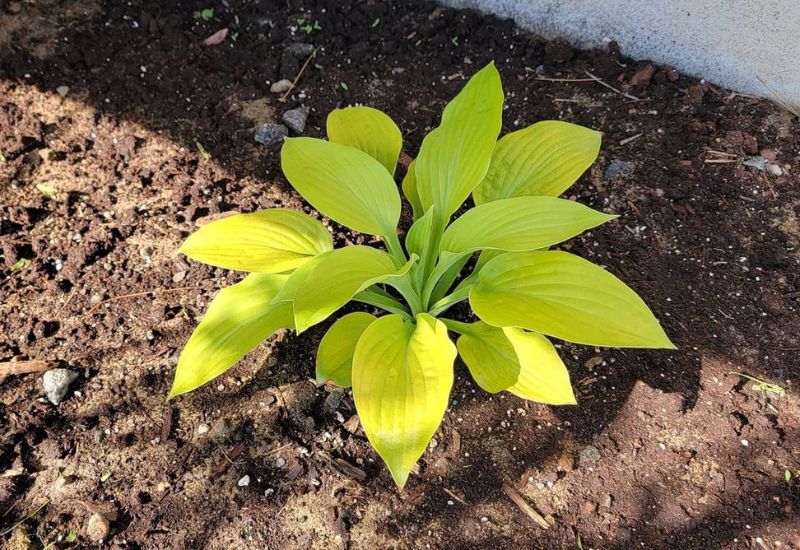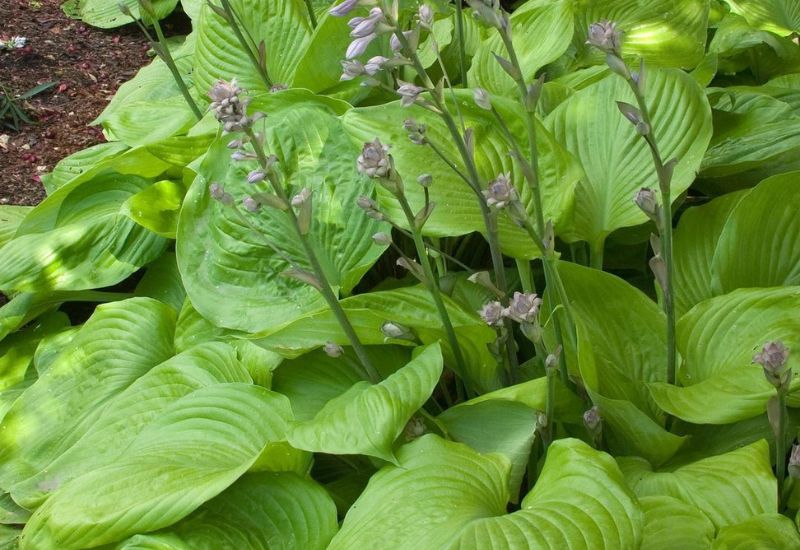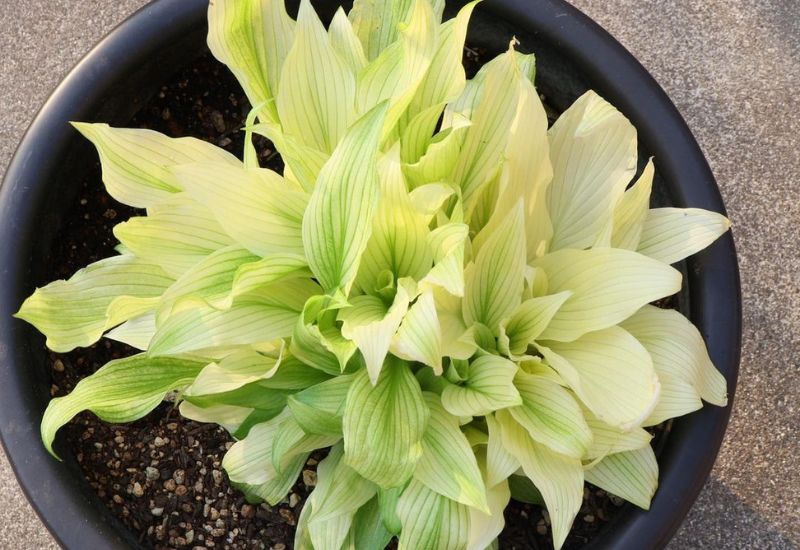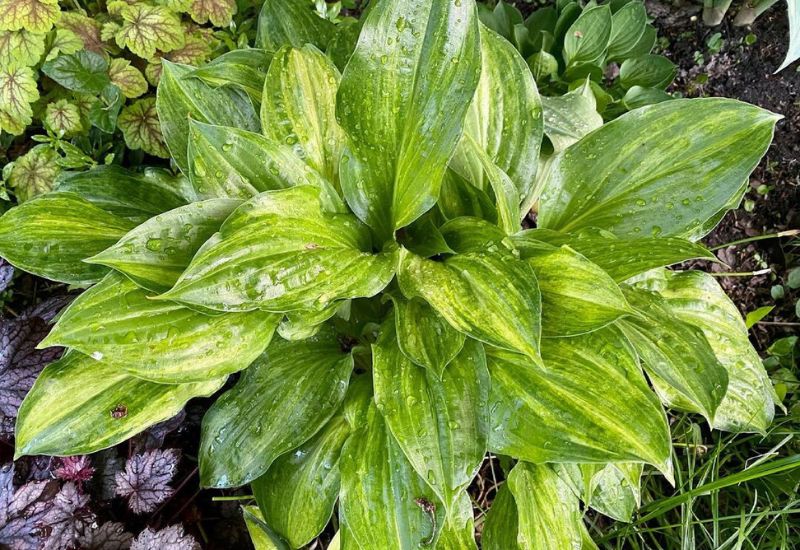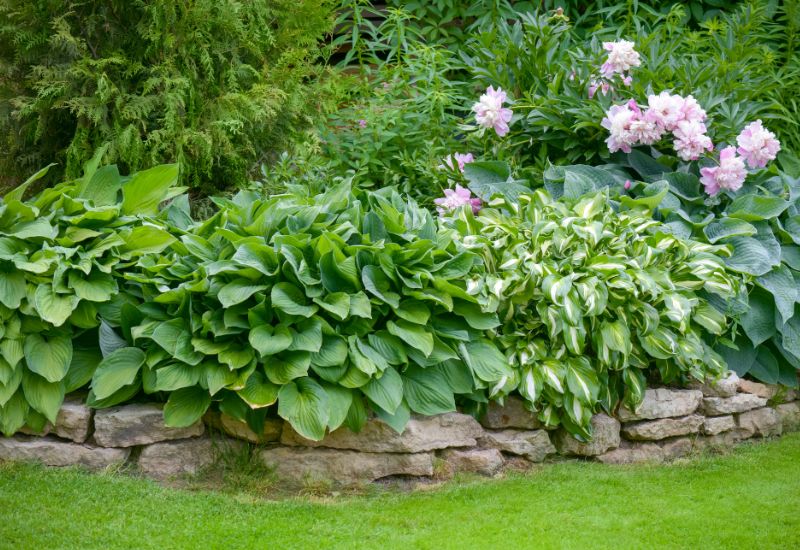
Hostas are known as plants that like shady places and thrive in areas where most other plants struggle with a lack of light. A richly leafy rosette with a naturally domed shape, the texture or pattern of vivid colors of its foliage make the hosta an ideal solution for revitalizing difficult spots in the garden, such as those under the crowns of trees or tall bushes.
Nevertheless, among 70 species and more than 3000 varieties, some hostas can grow in positions with much more direct light! Moreover, partial exposure to the sun contributes to the color intensity of foliage, and lack of sunlight causes paleness on the leaves!
But before we recommend the most attractive ones from that group, let us discuss the meaning of ‘sun-tolerant hostas’!
How Much Sun Can Hosta Tolerate?
No matter what variety it is, no type of hosta can stand all-day exposure to direct sunlight! Their mostly thin, delicate leaves are not adapted to the conditions of the blazing sun for seven or more hours a day.
Therefore, when we talk about sun-tolerant hosta varieties, we’re talking about species that can tolerate 4 to 6 hours of the mild morning or 1-2 hours of the late afternoon sun. Even the most tolerant hosts should spend the rest of the day in the shade, especially on hot summer days.
Yellow Hosta Varieties That Shine Bright in Full Sun Gardens
Yellow or golden leaf hostas have a more intense color when illuminated by the mild eastern sun for a few hours. Moreover, growing in deep shade, some alluring varieties lose their yellow pigment and eventually acquire a vague yellow-green or completely green color.
August Moon Hosta
August moon hosta is a medium-sized hybrid with gorgeous, nicely textured, golden-yellow leaves. The plant’s height is 16 to 20 inches, and the width is 36 to 42 inches. It blooms in mid-summer with lavender-colored flowers.
If you plant it in zones 3 to 8, in a spot with 4 to 5 hours of the direct morning sun, the yellow tones on its leaves become dominant, creating an accentual point in the garden.
However, In climate zone 9, its tolerance to full sun is significantly reduced, so dappled or partial shade is the safer solution.
Sum and Substance Hosta
Sum and substance Hosta is one of the largest varieties you can find on the market, reaching 3 feet when mature! It gives numerous large shiny, heart-shaped leaves up to 20 inches in diameter.
The color of the leaves is bright green, but with enough light, it gradually changes from chartreuse to gold; It blooms in the second half of summer in bell-shaped, light purple racemes on 46-inch tall stems.
In climate zone 3 to 8, it can tolerate 1/4 of a day of direct sun, but it needs shade in the midday hours.
In addition to handling the sun, this variety also shows more resistance to snails, which is certainly more reason to enrich your garden with this golden yellow giant.
Other yellow varieties for sunny spots: ‘Gold regal, Golden sculpture, Rising sun, Squash casserole, and Sun Power.
Regal Splendor Hosta
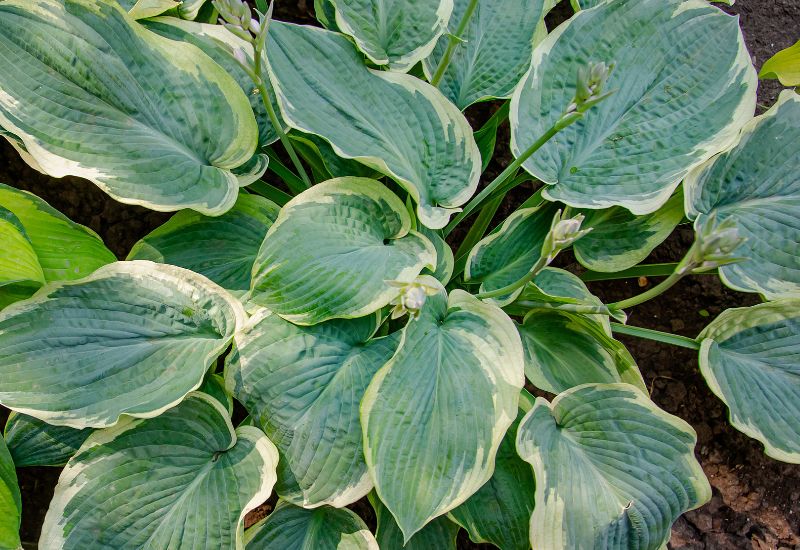
Impressive Regal splendor hosta is a large plant up to 3 feet wide and tall. It forms a dense, vase-shaped rosette of broad, heart-shaped leaves with wavy edges.
The captivating combination of frosty blue leaves with irregular, yellow, or ivory edges, as well as its size, make this variety an eye-catching focal point in any garden,
The bell-shaped lavender flowers appear mid-summer. The plant tolerates several hours of morning sun in zones 3 to 8.
Inniswood Hosta
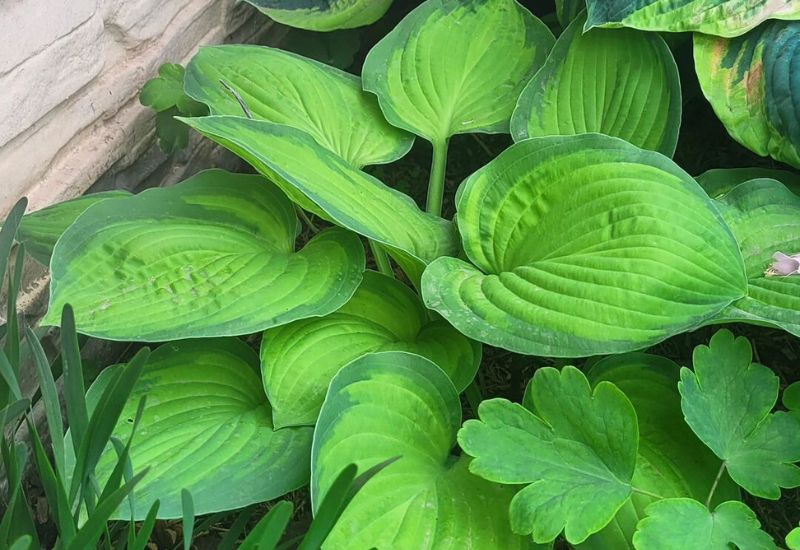
The variety is medium-tall with beautiful green-yellow to light yellow, heavily corrugated leaves with a dark green edge.
The plant grows to two feet tall and three feet wide and blooms in July with pale purple tubular, slightly fragrant flowers. The flowers rise gracefully above the leaves on 35-inch tall and sturdy stems.
In zones 8 and 9, it grows best in filtered sunlight with no direct sun except in the early morning hours.
Frances Williams Hosta
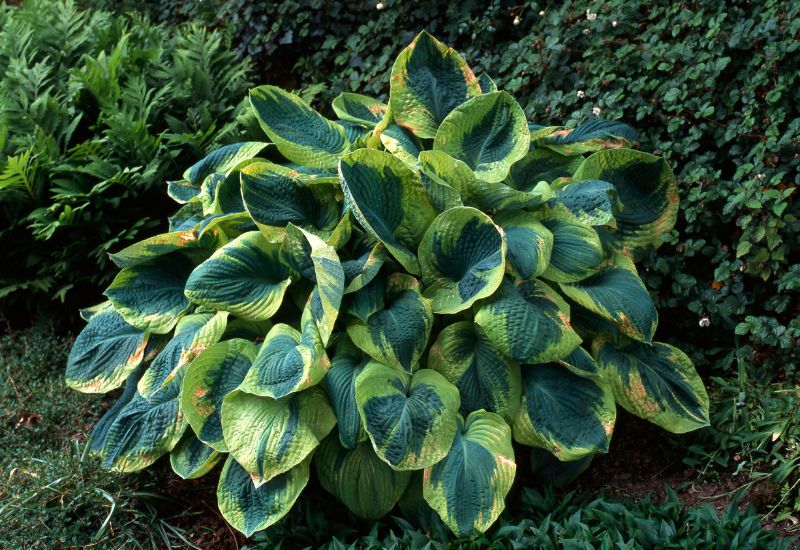
Hosta Frances Williams has a stunning combination of blue in the heart of the leaves and light green to the golden yellow edges, making this large hosta a dominant decoration of partially shaded spots in the garden.
Its rosette is 26 inches tall; the clump can spread up to 65 inches when it reaches full maturity. The color of the flowers is white or pale purple. It thrives in climate zones 3 to 8.
Other yellow-patterned hostas for the full sun: Carolina sunshine, Abba Dabba do, Gold Standard, Sundance
Fragrant Hosta Varieties to Enchant Your Full Sun Landscape
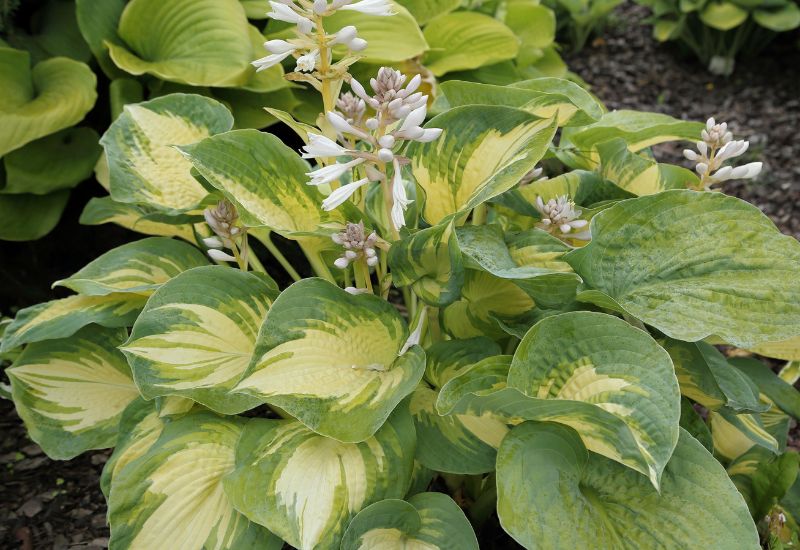
Hosta plantaginea and the cultivars and hybrids created from this species are the only groups among hostas with fragrant, large, mostly white flowers appearing in late summer.
In addition, plants from this group can tolerate up to 6 hours of direct sunlight, especially in the northern regions. They grow in zones 3 to 9, but the warmer the climate, the more shade they need to thrive and bloom.
Among the 56 registered fragrant hosta cultivars, we singled out the following:
Ming Treasure Hosta
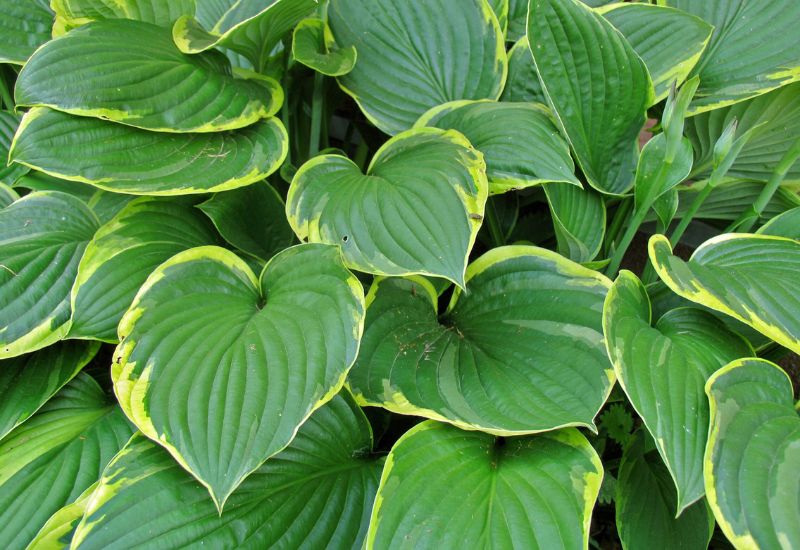
When they first appear, the fragrant hosta cultivar has large, rippled, glossy green leaves with a thin chartreuse margin. As the leaves grow, the border’s color becomes more pronounced and varies from yellow-green to cream-white, making the leaves very attractive. The plant grows 25 inches tall and 50 inches wide and forms a nicely rounded mound.
Large, bell-shaped flowers with six petals and intense fragrance are an additional plant asset.
Venus Hosta
Venus hosta is another fragrant species that will delight you with its fresh combination of single-colored bright green wrinkled large leaves and double white flowers at the end of summer.
Because of the very dense rosette that grows up to 22 inches tall and 32 inches wide, it is suitable as a ground cover. It grows best in zones 3 to 8 b, and although it is pretty tolerant of direct sunlight, it needs shade and plenty of moisture to survive the midday hours.
Other fragrant hostas that tolerate the sull sun: Royal standard, Summer Fragrance, So sweet, Guacamole, Sugar & cream, Aphrodite, Fried Green Tomatoes, Ming treasure
Hostas That Excel in Partial Shade Conditions
Blue hostas are popular among growers because of the unusual blue-green color of the leaves, which is very rare in the plant world. They owe those distinctive tones to the wax-like layer covering the leaf’s upper surface.
Unfortunately, if you expose some of the varieties with blue leaves to direct sunlight, this layer disappears, and the leaves lose that lovely shade and become completely green.
However, some of the types seem a little more resistant to direct sun, so depending on the overall growing conditions, it is potentially possible for such a hosta to remain blue despite inappropriate lighting.
Among the single-colored species, Blue Angel, Elegans, Halcyon,’ and ‘Krossa Regal’ can withstand slightly more intense lighting.
Hosta varieties with creamy white leaves look almost unrealistic, whether planted as solitary plants or in a shaded mixed bed.
Unfortunately, their thin leaves burn fast when exposed to strong sunlight. Moreover, too intense lighting, if it does not cause burns, stimulates the intensive production of chlorophyll and the plant eventually turns green.
For this reason, white hostas grow best in dappled, partial, or complete shade without much contact with direct sunlight.
Hostas with the Potential to Excel in Sunny Spots
Most varieties with a green-white combination of leaves are not plants that tolerate full sun and give their best if planted in shady positions. Unlike the yellow hostas, too much direct sunlight mainly causes their leaves to lose color intensity or variegation.
However, here are a few varieties that show a little more tolerance toward direct sunlight:
Minuteman Hosta
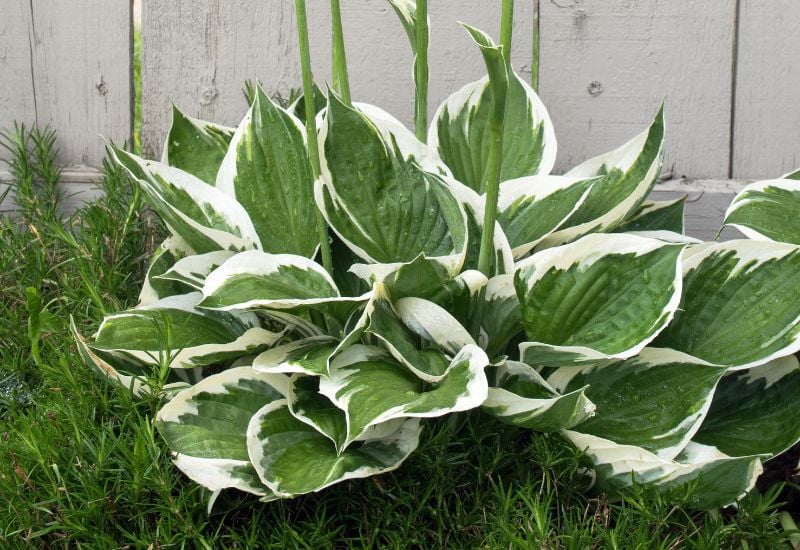
The plant grows in climate zones 3 to 9. It is an eye-catching variety with large glossy dark green leaves and a prominent irregular, wide pure white margin.
Its slightly cupped leaves are thicker than other hosts with a white pattern so that they can withstand more intense lighting. The plant forms a rich mound two feet high and 3.5 feet wide. In mid-summer, pale lavender flowers with no scent rise above the leaves.
Korean Show Hosta
The Korean show hosta is an unusual species with gleaming elongated, pointed leaves rounded at the base. When it grows in a place where it gets direct morning sunshine, vertical white stripes appear on the leaves.
In full shade, the leaves remain monochromatic. The plant is suitable for climate zones 3 to 9 and grows up to 13 inches tall, making it ideal for growing in containers. Lavender-colored spider-like flowers appear in the summer months.
Other white variegated hostas for sunny spots: Fragrant bouquet hosta, Cristal moon hosta, Diana remembered hosta
How Can I Tell if Hosta Likes the Sunny Position?
Even when you choose a variety that can handle a bit more direct sun, there is still no guarantee that the hosta you planted in the garden in a sunny place will successfully grow into a healthy, richly leafy, and intensely pigmented plant!
Fortunately, the appearance of the leaves can tell you whether the plant is growing in the right place or not. Therefore, carefully observe your hosta and pay attention to the following warning signs:
If you notice any of the mentioned signs, you should move the hosta to a position where direct sunlight will not make its life miserable. As soon as you eliminate the problem, the plant will recover and produce new and healthy leaves.
You do not have to wait for fall or next spring since hostas are resistant and durable, so with appropriate after-care, you can transplant them even in the middle of the season!

Written By
Margie Fetchik
Margie and Arkansas native has an extensive background in gardening and landscaping. For the last 40 years, Margie has called the Colorado Rocky Mountains her home. Here she and her husband of 36 years raised three kids and owned a successful landscaping company. Margie has a CSU Master Gardener certification. She specialized in garden design & installation, perennial gardens, turf grasses & weeds, flower containers, and the overall maintenance of allHOA, commercial and residential accounts. She and her husband now reside in Denver and are excited about the new experiences’ city life holds.

